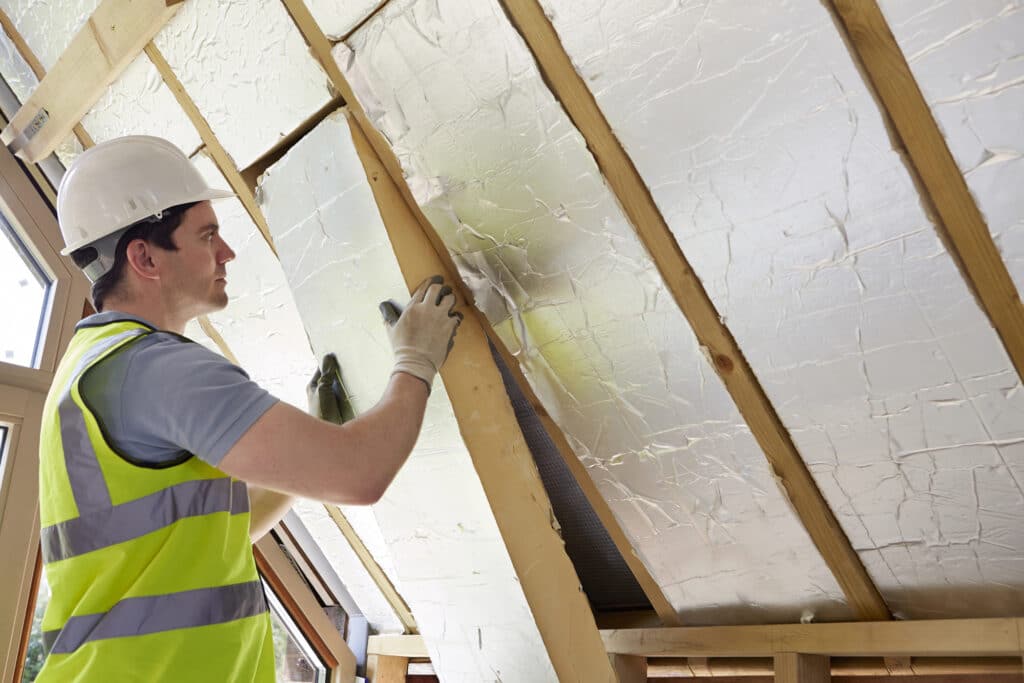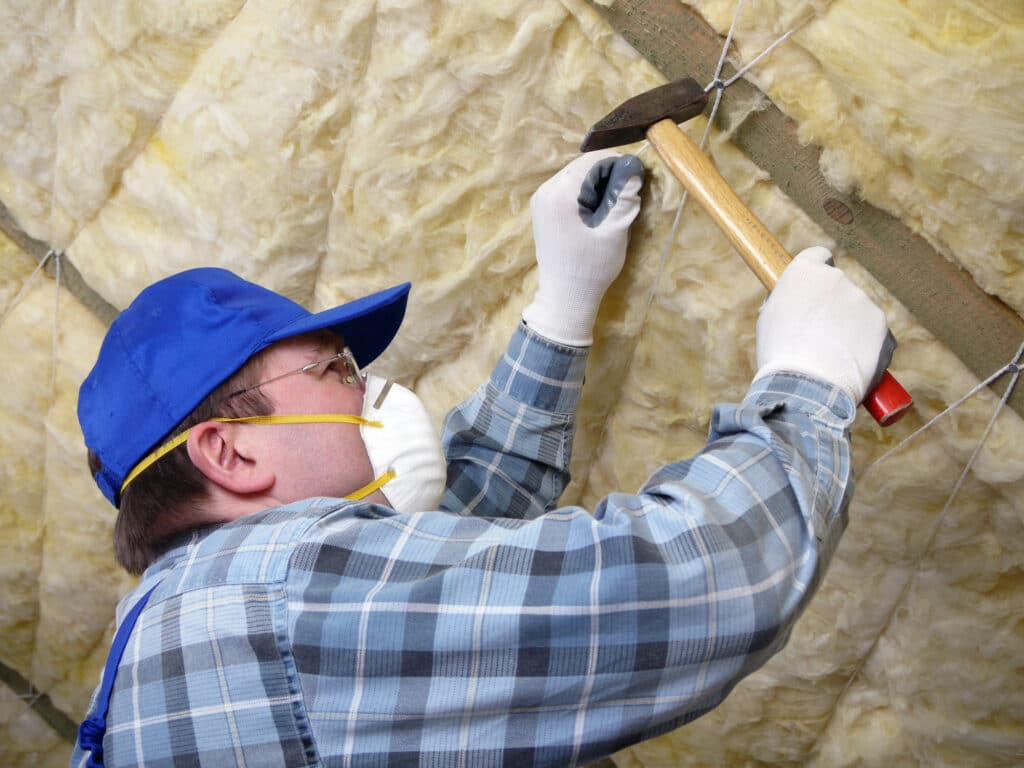If you’re building or renovating a home, insulation, particularly attic insulation, is key to ensuring your space stays comfortable and energy-efficient. There are two main types of insulation: faced and unfaced. Faced insulation has a vapor barrier, while unfaced insulation does not, making it essential to understand the difference between them before making a choice.
Faced insulation is typically used in areas where moisture is a concern, such as basements or crawl spaces. The vapor barrier helps prevent moisture from entering the insulation and causing damage, which is critical in preventing mold and mildew. Unfaced insulation is often used in areas where moisture is not a concern, such as attics or walls.
When deciding which type of insulation to use, it’s important to consider your space’s specific needs. If you’re unsure which type to use, faced or unfaced insulation, it’s always best to consult a professional to ensure you make the right choice. Additionally, it’s important to install insulation to ensure it’s working effectively properly.
Property Difference Between Faced and Unfaced Insulation
Insulation is an essential component of any building, and it helps to regulate temperature and reduce energy costs. There are two main types of insulation: faced and unfaced insulation. Both types differ in their characteristics and properties.
Faced Insulation Characteristics

Faced insulation has a paper or foil facing on one side, which acts as a vapor barrier. The facing helps to prevent moisture from entering the insulation, making it ideal for use in areas where moisture is a problem. Faced insulation is typically more expensive than unfaced insulation, costing about $0.50 to $2 per square foot of wall or ceiling.
Faced insulation is available in different types, such as batt and fiberglass insulation. Batt insulation is pre-cut to fit between wall studs, while fiberglass insulation comes in rolls or batts. Faced insulation is more fire-resistant than unfaced insulation, making it a safer option for areas where fire hazards are a concern.
Unfaced Insulation Characteristics
Unfaced insulation does not have a paper or foil facing, making it more flexible and easier to install. It is typically made of fiberglass and is available in batts or rolls. Unfaced insulation is less expensive than faced insulation, costing about $0.50 to $1.75 per square foot.
Unfaced insulation is primarily used in areas where no vapor barrier is needed. It can be used in attics over existing insulation to add more R-value. Unfaced insulation can also be installed in interior walls for insulating and soundproofing. It is also non-combustible, reducing fire hazards.
In conclusion, faced and unfaced insulation have different characteristics and properties. Faced insulation is ideal for areas where moisture and fire hazards are a concern, while unfaced insulation is more flexible and less expensive, showcasing the difference between faced and unfaced. When choosing insulation, consider the specific needs of your building and consult with a professional if necessary to decide whether to use faced or unfaced insulation.
Installation and Application for Proper Insulation
Where to Use Faced Insulation
Faced insulation is typically used in areas where a vapor barrier is needed, such as exterior walls and attics that face the outside area. The facing acts as a barrier to prevent moisture from getting into the insulation, which can reduce its effectiveness. Faced insulation is also easier to install in these areas since it can be stapled into place without an additional vapor barrier.
Where to Use Unfaced Insulation

Unfaced insulation is primarily used in areas without a vapor barrier, such as interior walls, floors between levels, and attics over existing insulation. Since it lacks a vapor barrier, it is important to address any moisture issues before installation to avoid mold and mildew problems. Unfaced insulation is also non-combustible, reducing fire hazards, a significant consideration for home improvement projects.
Installation Best Practices
No matter which type of insulation you choose, there are some best practices to follow during installation to ensure maximum effectiveness. Here are a few tips:
- Wear protective gear, including gloves, a mask, and eye protection, when handling insulation.
- Make sure that the insulation fits snugly between the studs or joists, but avoid compressing it.
- Use a utility knife to trim the insulation to fit around electrical boxes and other obstructions.
- Seal any gaps or air leaks with caulk or foam insulation to prevent air infiltration.
- Consider hiring a professional to install the insulation if you are unsure of how to do it yourself.
- Check the local building code to see if the insulation you installed is appropriate.
Following these best practices ensures that your insulation is installed correctly and provides maximum energy efficiency and comfort in your home.
Understanding Vapor Barriers and Retarders
Vapor barriers and retarders are important in insulation because they prevent moisture buildup. These materials are designed to limit the flow of water vapor through the insulation and into the living space, thereby reducing the risk of mold and mildew.
Role of Vapor Barriers
A vapor barrier is a material that is designed to prevent the movement of moisture through the insulation. It is typically made of plastic or foil and is placed on the warm side of the insulation. The purpose of the vapor barrier is to prevent moisture from entering the insulation and condensing, which can lead to mold growth and other problems.
Paper Vapor
Kraft-faced insulation is a type of insulation that has a paper facing on one side. This facing acts as a vapor barrier, preventing moisture from entering the insulation. Kraft-faced insulation is typically used in walls and ceilings requiring a vapor barrier.
When to Use a Vapor Retarder
A vapor retarder is a material that is designed to slow down the movement of moisture through the insulation. It is typically made of materials such as kraft paper or asphalt-coated paper. A vapor retarder is used in situations where a vapor barrier is not required, but some moisture control is necessary.
Unfaced insulation is a type of insulation that does not have a vapor barrier or retarder. It is typically used in areas where a vapor barrier is not required, such as attics or interior walls, for soundproofing.
It is important to note that using a vapor barrier or retarder depends on the climate and the specific application, underlining the importance of knowing your particular needs. Sometimes, a vapor barrier may not be necessary, while in other cases, a vapor retarder may be sufficient. It is important to consult with a professional to determine the best solution for your specific needs.
Advantages and Considerations in Choosing the Right Insulation for Your Home
When it comes to choosing between faced and unfaced insulation, there are several factors to consider. Here are some advantages and considerations to help you make an informed decision.
Energy Efficiency
Insulating your walls, ceiling, and especially attic ceilings can help reduce the amount of energy needed to heat or cool your home. Faced insulation has a vapor barrier that helps prevent moisture from entering the insulation, which can help improve its energy efficiency, highlighting the difference between faced and unfaced. However, faced insulation is not always necessary, and unfaced insulation can still provide adequate insulation for your home.
Cost-Effectiveness
The cost of insulation can vary depending on the type of insulation you choose. On average, faced insulation costs about $0.50 to $2 per square foot of wall or ceiling, while unfaced insulation costs about $0.50 to $1.75 per square foot. Faced insulation may be more expensive, but it can provide additional benefits such as improved energy efficiency and moisture protection.
Environmental Impact
Insulation can have an impact on the environment, and it’s important to choose insulation materials that are eco-friendly. Both faced and unfaced insulation can be made from sustainable materials such as recycled denim or cellulose. When choosing insulation, consider the environmental impact of the materials used and choose materials that are environmentally friendly.
Overall, the decision between faced and unfaced insulation depends on your specific needs and budget. Consider factors such as energy efficiency, cost-effectiveness, and environmental impact when choosing the right insulation for your home.
Let Green Attics Help
Should you have questions regarding insulation or even HVAC in general, feel free to contact us. You may also schedule a free energy audit to assess your home’s needs.

